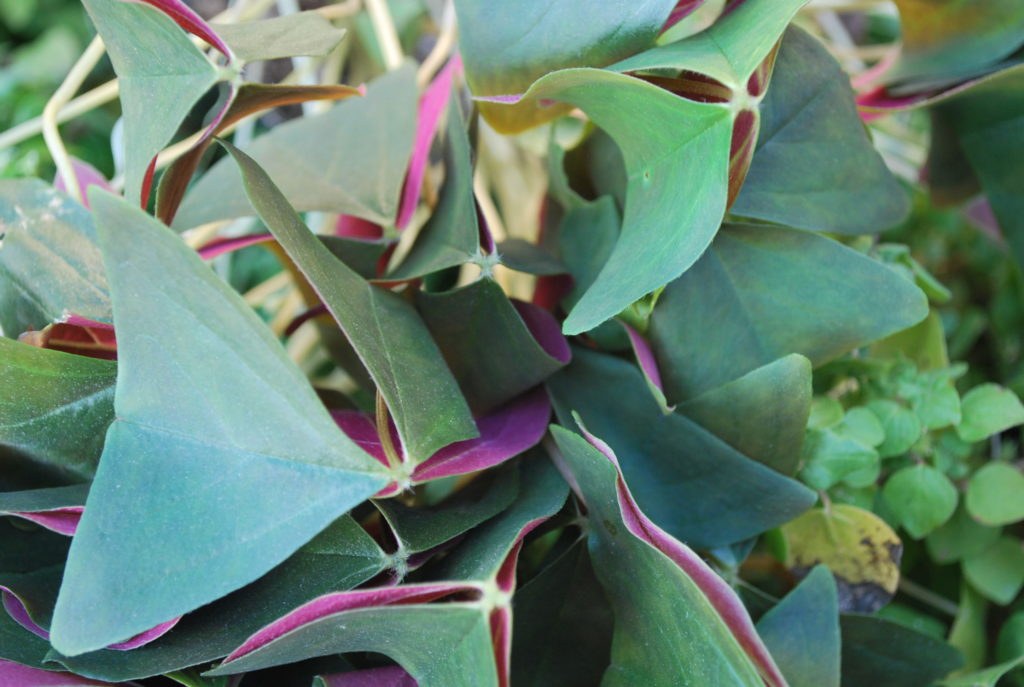
Q: How can I get rid of the pink clover growing in my yard? The patch of clover seems to be getting bigger every year and taking over my lawn. The flowers are pretty enough when they are open, but they close in the afternoon and evening.
George, via email
A: When the pink clover shows up in the lawn and landscape, the end of winter is here, and spring is not far behind. The plant most often seen growing in the yard with three-part leaves and pink/purple flowers isn’t a true clover but an Oxalis.
Oxalis plants are popular as novelties; they are often sold as Shamrocks around St Patrick’s Day and bedding plants for the landscape. There are approximately 30 of the 600 species of Oxalis used as ornamental plants in containers, gardens, and landscapes. The leaf color varies from green to blue to silver, burgundy-purple, and gold. Flowers are small and may be white, pink, red, rose, purple, orange, or yellow. The leaves and flowers of Oxalis fold up at night and reopen in the daylight.

Oxalis debilis, also known as pink wood sorrel, is the most common plant which grows as a weedy “clover” in lawns. It is not native to the U.S. but is indigenous to tropical America. It is well established in Florida and the rest of the southeastern U.S. but is not considered an invasive plant by most authorities. Is pink wood sorrel, is it a weed or a desirable flower?
In addition to being pretty, Oxalis can be a weed in turfgrass and landscape beds. The plants are spread by underground stems known as rhizomes and seeds produced in large quantities. The seed pods help spread the plant by splitting explosively and shooting the seeds all over the surrounding area.
Oxalis are more abundant in lawns during cooler weather. It also tends to invade where there is space to grow, such as in thinning turf. So, the best control in lawns is prevention by eliminating or reducing thinning turf.
Best lawn management practices for a thicker lawn include growing turf only in sunny areas, a minimum of 6-8 hours of sun, and mowing high, usually at 3.5 to 4 inches tall, using sharp mower blades. Also, irrigate deeply and less often – only when the turf needs it, keep up with fertility, and use high-quality fertilizer in combination with a soil test.
When turf begins rapidly growing with the return of warmer weather, it will sometimes crowd out Oxalis weeds, so control may not be necessary. However, it may be necessary to try other methods, including hand-pulling or the spot application of herbicides to reduce the population.
Once the weed numbers are reduced and maintenance practices corrected, if the turf is still thin and weeds tend to grow in that area, it is good to plant something other than lawn grass. Granny Cloud was fond of planting only plants which thrive in a specific location, that way, you don’t have to work so hard, she said.
You decide, pink wood sorrel or clover, is it a weed or a desirable flower?
This column first appeared in the Treasure Coast Newspapers.
Leave a Reply